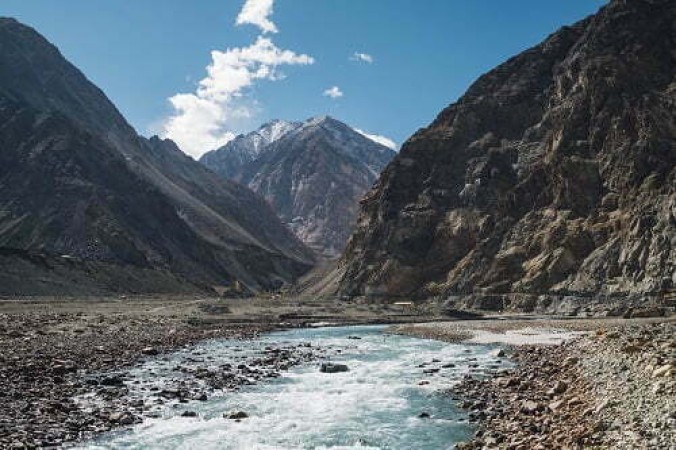
Indian geography is a fascinating subject that encompasses a diverse range of geographical features, climates, and landscapes. From the soaring Himalayan mountains in the north to the vast coastal plains in the south, India's geography plays a crucial role in shaping its history, culture, and economy. In this article, we will explore the major elements of Indian geography, shedding light on its varied aspects and significance.
1. The Indian Peninsula
The Indian peninsula is a prominent geographical feature that juts into the Indian Ocean. Bordered by the Arabian Sea on the west, the Bay of Bengal on the east, and the Indian Ocean on the south, it is home to a diverse range of coastal regions, islands, and deltas.
1.1. Coastal Plains
The Indian peninsula boasts extensive coastal plains on both its eastern and western sides. The Western Ghats and the Eastern Ghats run parallel to the coasts, forming the Western and Eastern Coastal Plains, respectively. These plains are not only agriculturally fertile but also vital for trade and commerce.
1.2. Islands and Deltas
India is blessed with several important islands, such as the Andaman and Nicobar Islands in the Bay of Bengal and Lakshadweep Islands in the Arabian Sea. Additionally, the deltas of major rivers, including the Ganges and Brahmaputra, are significant geographical features that contribute to the country's agricultural productivity.
2. The Himalayas
The majestic Himalayan mountain range serves as India's natural northern border. It is the world's highest mountain range, with some of the most towering peaks, including Mount Everest. The Himalayas not only protect the Indian subcontinent from harsh northern climates but also play a vital role in influencing the monsoon patterns.
2.1. Glaciers and Rivers
The Himalayas are known for their vast glaciers, which serve as the source of several important rivers in India. Rivers like the Ganges, Yamuna, Brahmaputra, and many others originate in the Himalayan glaciers and are crucial for irrigation, drinking water, and religious significance.
2.2. Biodiversity
The Himalayan region is home to a rich biodiversity, with various flora and fauna species thriving in its diverse climatic conditions. Conservation efforts in this region are of utmost importance to preserve the ecological balance.
3. The Thar Desert
Located in the northwestern part of India, the Thar Desert is one of the world's most densely populated deserts. Despite its arid nature, it has a unique culture and lifestyle adapted to the harsh conditions.
4. The Indo-Gangetic Plain
The Indo-Gangetic Plain is one of the most fertile regions in India, encompassing the basin of the Ganges and the Yamuna rivers. It is the breadbasket of the country, supporting a large agricultural population.
5. The Deccan Plateau
The Deccan Plateau, situated in the southern part of India, is a vast elevated landmass with a varied topography. It is characterized by its rugged terrain, volcanic formations, and rich mineral resources.
6. The Western and Eastern Ghats
The Western and Eastern Ghats are two mountain ranges running parallel to the western and eastern coasts, respectively. They are known for their lush greenery, biodiversity, and the Western Ghats' significance as a UNESCO World Heritage Site.
7. The Rivers of India
India is crisscrossed by numerous rivers, each contributing to the country's socio-economic development. Apart from the Ganges and Brahmaputra, other major rivers include the Yamuna, Godavari, Krishna, and Kaveri.
8. Climate Zones
India experiences a diverse range of climates due to its vast geographical extent. From tropical in the south to arctic in the north, the country has varied weather conditions that influence its agriculture, flora, and fauna.
9. Natural Disasters
India is prone to various natural disasters, including earthquakes, cyclones, floods, and landslides, due to its geographical location and diverse terrain.
10. Impact on Culture and Traditions
Indian geography has deeply influenced the culture, traditions, and festivals of the people living in different regions. The geography has played a crucial role in shaping the country's art, architecture, and cuisines. The knowledge of major elements of Indian geography is crucial to understanding the country's unique diversity and rich heritage. From the Himalayas in the north to the Indian Ocean in the south, each geographical feature has contributed to India's growth and prosperity. The vastness and complexity of Indian geography make it an intriguing subject for exploration and study.
GST collection, devolution a success story Explained: FM Sitharaman
India's Potential as a Leading Skilled Workforce Provider: PM Modi